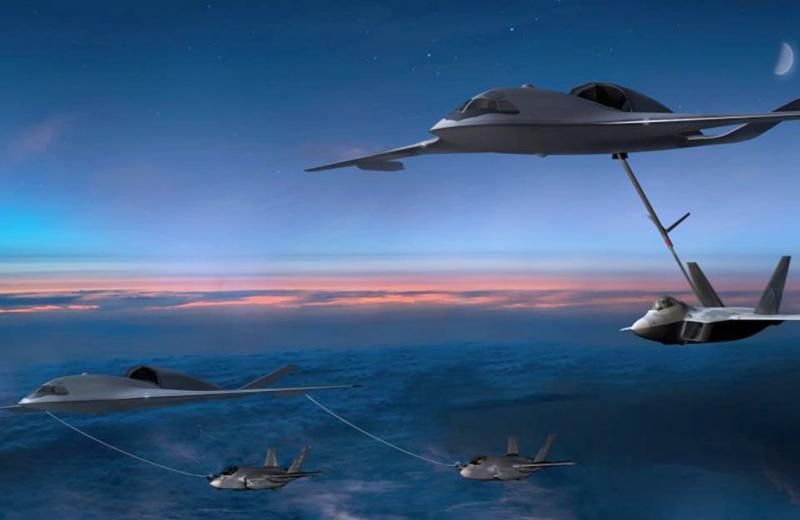The Air Force aims to release a request for proposals for the KC-135 Recapitalization Program—formerly called the “bridge tanker”—in fiscal 2025 but has yet to set an acquisition strategy for the aircraft, waiting for more industry input, a service spokesperson said.
Service officials have previously forecast an acquisition strategy to be ready by mid-2024.
Responding to queries about the future of competition on the tanker recapitalization program, from which Lockheed Martin withdrew its LMXT offering last month, the Air Force said it is “looking forward to reviewing industry responses to the Tanker Recapitalization Program RFI” or Request For Information, responses to which were due last month.
The service is “committed to completing the ongoing market research before determining its acquisition strategy and remains committed to delivering the best tanker to the warfighter at the best value,” the spokesperson said.
The service did not say whether it plans a competition, and service leaders including Secretary Frank Kendall have questioned whether a competition would be worth the expense and delay involved. The alternative would likely be to buy more upgraded versions of the KC-46 Pegasus.
Some members of Congress have expressed unhappiness with the idea of skipping a competition given the KC-46’s struggles. Thus far, however, they have failed to pass any legislation mandating a new tanker contest.
Air Force acquisition executive Andrew Hunter has said that a tanker analysis of alternatives was to get underway this fall, based in part on the results of the RFI.
The KC-135 Recapitalization Program seeks to maintain an unbroken chain of aerial tanker production between the end of the KC-46 contract, circa 2029, and the initial operating capability of the Next Generation Air-refueling System (NGAS), a smaller, stealthy tanker that will accompany combat aircraft into contested airspace. The NGAS is still being defined.
Lockheed had pitched its LMXT, based on the Airbus A330 Multi-Role Tanker Transport, as a “mothership” for these small stealth tankers, as it has much larger fuel capacity than the Boeing KC-46 now in production.
After Lockheed’s exit, its partner Airbus said it would still seek to compete for the program. But in its response to query from Air & Space Forces Magazine, the Air Force spokesperson was cagey about whether the service would accept a foreign offer, saying it is “interested in delivering the best tanker to the warfighter and will adhere to all statutory and regulatory provisions for the Tanker Recapitalization strategy.”
In its last two swings at selling its Multi Role Tanker Transport (MRTT) to the Air Force, Airbus was partnered with a U.S. prime contractor and pledged significant U.S. content and final assembly in the U.S. Its deal with Lockheed for LMXT called for major work to be done in Lockheed’s Marietta, Ga. facilities and in Alabama. The company has not yet discussed how it will pursue the bridge tanker without Lockheed.
“Buy American” laws mandate that certain percentages of content and labor be sourced/performed in the U.S., but content rules vary depending on the type of product.
The Air Force also said it is willing to look at a larger number of aircraft it might buy under the bridge tanker program. While the service has recently said it is expecting the program to include about 75 aircraft—five years of production at an annual rate of 15 aircraft—the service said it “will be flexible” in thinking about how many to buy.
“The Air Force’s goal is to use Tanker Recapitalization to replace 15 KC-135s per year as they retire,” the spokesperson said. “The number of air refuelable, commercial derivative tankers procured to replace KC-135s will be flexible and dependent on Next Generation Air-refueling System (NGAS) first delivery. Tanker Recapitalization deliveries are envisioned to be a minimum of five years to address the gap between KC-46A and an accelerated NGAS.”
To gain flexibility, the spokesperson said, the Air Force said in its request for information that it will look at “up to 140 aircraft,” in case the NGAS doesn’t arrive at the expected time.
Lockheed, in discussing its potential LMXT proposal, said that at 75 aircraft, it could not close the business case to justify a bid, and company officials said they expected the Air Force would wind up buying a minimum of 110-150 aircraft. However, service leaders have also said that if the NGAS moves faster than expected, that the bridge tanker would be curtailed and those resources applied to NGAS, which will have a more advanced and survivable design.
Kendall has said the threat from Chinese long-range missiles “doesn’t allow” the Air Force to go much further with tube-and-wing aircraft adapted from commercial airliners or freighters. Instead, the service is interested in a stealthy aircraft of an all-new design.
The most recent RFI for the KC-135 Recapitalization Program was released in September and is a “controlled” document, meaning its details can’t be released. But a 2021 version of the RFI did call for 140-160 bridge tankers to be bought, starting in 2029, to ensure an unbroken chain of tanker production.
The “tanker recapitalization” refers to replacing the remainder of KC-135s, most of which date back to the Eisenhower Administration, but which have been structurally extended and once re-engined over the last 60 years.
Besides Boeing’s KC-46 and Airbus’ MRTT, there are no large aerial tankers now in production or planned. Lockheed has a smaller KC-130 tanker it builds for the Marine Corps, but the Air Force has indicated it wants an aircraft with greater capacity. The Air Force has said it will consider contracting for tanker services as part of its overall tanker enterprise, but has generally been cool to the idea.
